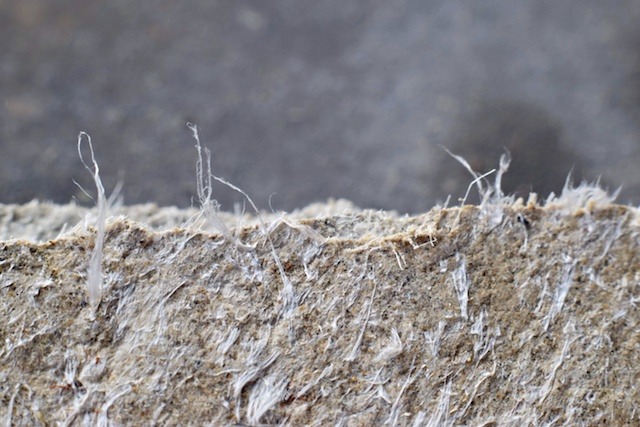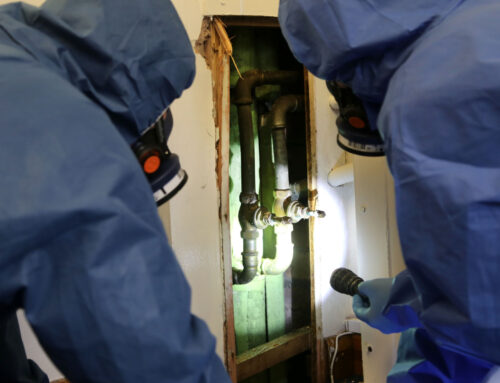Asbestos in Ceiling Tiles and Wall Plaster – What You Need to Know
In this guide we discuss everything you need to know about asbestos in ceiling tiles and wall plaster…
Is There Asbestos in Your Ceiling or Wall Plaster?
If your property was built before the year 2000 then it is possible that your wall plaster or ceiling tiles may contain asbestos. This is because asbestos was used extensively in various applications until 1999 (which is when it was fully banned from use in the UK) Asbestos is an effective fire-resistant and insulating material that was widely and cheaply available. It was commonly mixed with plaster and coatings to provide additional strength and fire protection to walls and ceilings.
Ceiling tiles and wall plaster containing asbestos was commonly used in a wide variety of buildings including schools, universities, warehouses, hospitals and offices.
Are Asbestos in Ceilings and Plaster Walls Dangerous?
Asbestos is a fibrous material made up of microscopic fibres that cannot be seen, smelt or tasted. If these fibres are disturbed and become airborne there is a possibility that they may be breathed in by anyone who may be occupying the building. This can become a serious danger to your health as once they’re inside your body the fibres can lodge and become trapped in the lungs and other areas. These trapped fibres can cause serious life threatening diseases such as lung cancer, asbestosis and mesothelioma.
If, however, the walls or ceilings that contain asbestos remain undamaged and in good condition then the material is not generally considered to be harmful as it will not readily release fibres into the air. It is possible that as plaster ages it can break down and become friable which may release fibres into the atmosphere.
If you plan to carry out any renovation works, remove decorative coating, re-plaster the wall, drill a ceiling tile or undertake any other refurbishment works then it is crucial you take steps to mitigate the risk of airborne asbestos.
It’s important to note that it can take up to 20 years after asbestos exposure for symptoms to develop and those who have been exposed to fibres on a regular basis are the most likely to develop an asbestos-related disease.
How to Identify Asbestos in Plaster and Ceiling Tiles
It is virtually impossible to determine the presence of asbestos just by looking at your walls and tiles with the naked eye and this is why it is easy to unwittingly disturb materials that contain asbestos.
The most commonly used process to detect asbestos in materials is by using a process called Polarized Light Microscopy. Prior to any proposed refurbishment works it is recommended that a survey is undertaken of the area to determine if asbestos is present. A UKAS accredited inspection body and testing laboratory can complete a survey of your property and test samples of ceiling tiles and wall plaster.
The survey will locate all potential asbestos containing materials (ACMs) in your building and take samples of your plasterwork and ceiling coatings among other possible ACMs and send them off to a laboratory for analysis. The analysis will then inform you whether asbestos is in fact present as well as define which type(s) of asbestos is present, the danger it currently poses, and the levels of ongoing risk management required.
Where Else Might You Find Asbestos?
Ceiling tiles and wall plaster are not the only places you might find asbestos. Here are some other common places you might find it:
- Pipe lagging
- Insulation
- Floor tiles
- Gutters and downpipes
- Roofing felt
Asbestos in Plaster Walls and Ceiling Tiles Testing with Casa Environmental Services
If you have any doubt about whether the ceiling tiles, wall plaster or any other materials in your home contain asbestos please don’t hesitate to get in touch with Casa Environmental Services today We offer a comprehensive range of asbestos surveying and analytical services and have years of experience in the industry. You can rest assured that your asbestos issues will be dealt with professionally and in compliance with all current legislation.
See more: Asbestos Regulations – A Beginner’s Guide to The Control of Asbestos Regulations 2012
See more: Asbestos in a Garage – Does Your Garage Have Asbestos




